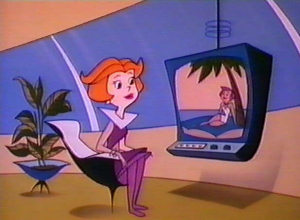One of my favorite aspects of teaching is being able to learn how young people really feel about certain issues, and in a relaxed environment. Yesterday I had a conversation with some of my Advanced Tonal Theory and Composition students at Sarah Lawrence College about which interactions between people are more or less personal. Interestingly, there was a consensus about certain forms of communication—phone conversations and one-on-one contact, in particular—but everyone was more opinionated about more recent communication techniques such as Text Messaging. At the risk of stepping on Miss Manners toes, this is what we came up with. The following types of communication are ordered from most personal to least personal. Face to Face Contact If you want to connect with someone in the strongest possible way, you should meet face to face. No other form of communication really takes the place of this. It involves all of our senses—visual, aural and olfactory. Plus, your body language and facial expression will be clearly visible, which in many cases, can be a big plus when trying to get your point across.
Video Phones Video phones have not really caught on yet, but they will soon. You can see and hear someone and body language and facial expressions are clearly visible. Video Conferencing is also very personal and is really just the same thing on a larger scale.
Video Chat Video Chatting is not much different from using a Video Phone, except that some people still have an aversion to computers, and it still seems a little more stifling to sit in front of a computer, but technologies are merging more and more every day, and in ten years, there will probably be little difference between the two.
Phone A phone conversation is still a good bet, and obviously very easy, but you can not see the person (or people) on the other end and it's more difficult to read someone. People can modulate their voices and talk in a way that is not reflected by their body language. It is also easy to hang up on someone, and often times, people talk differently on the phone than in person, often without realizing it.
Personal Letters This was one of the most debated forms of communication with my students. Most of them do not send letters, and of course, a few students brought up the great point that a form letter is very different from a personal letter, but as they pointed out, who sends personal letters anymore? No one really communicates via snail mail anymore if they can at all help it. Yet, sending a carefully thought-out letter is a warm gesture, especially if it is hand-written. It shows that you took time, and hey—you even paid for postage!
Instant Message Instant Messaging is at least as personal as a hand-written (or personalized) letter, and more personal than email, but perhaps less effective than a phone call as someone can just walk away from their computer.
Message Board This is similar to email in that you can carry on a written exchange, albeit it will not be in real time, and posting a message definitely does not guarantee a reply. Message boards are popular with specialized online communities.
Email Email is the least effective way to communicate if you are trying to connect with someone. When I receive an unsolicited email message, especially from a business, I cannot hit the delete or Junk Mail Button fast enough. It is just too easy to ignore an email message. However, it is also the least intrusive way to communicate, so some people prefer it to any other mode of communication.
Text Messaging This is probably the most controversial type of communication. It is highly personal, and can be seen as a phone call or instant message in level of importance. This could potentially be included above instant messaging above.
What can we learn from this? Some of these technologies are more or less engaging, mostly depending on how you use them. However, when trying to connect with someone, I would say that of all the usual modes of communication, personal interaction is best, a phone call next, then a personal letter, then email. Everything else falls somewhere inbetween.
